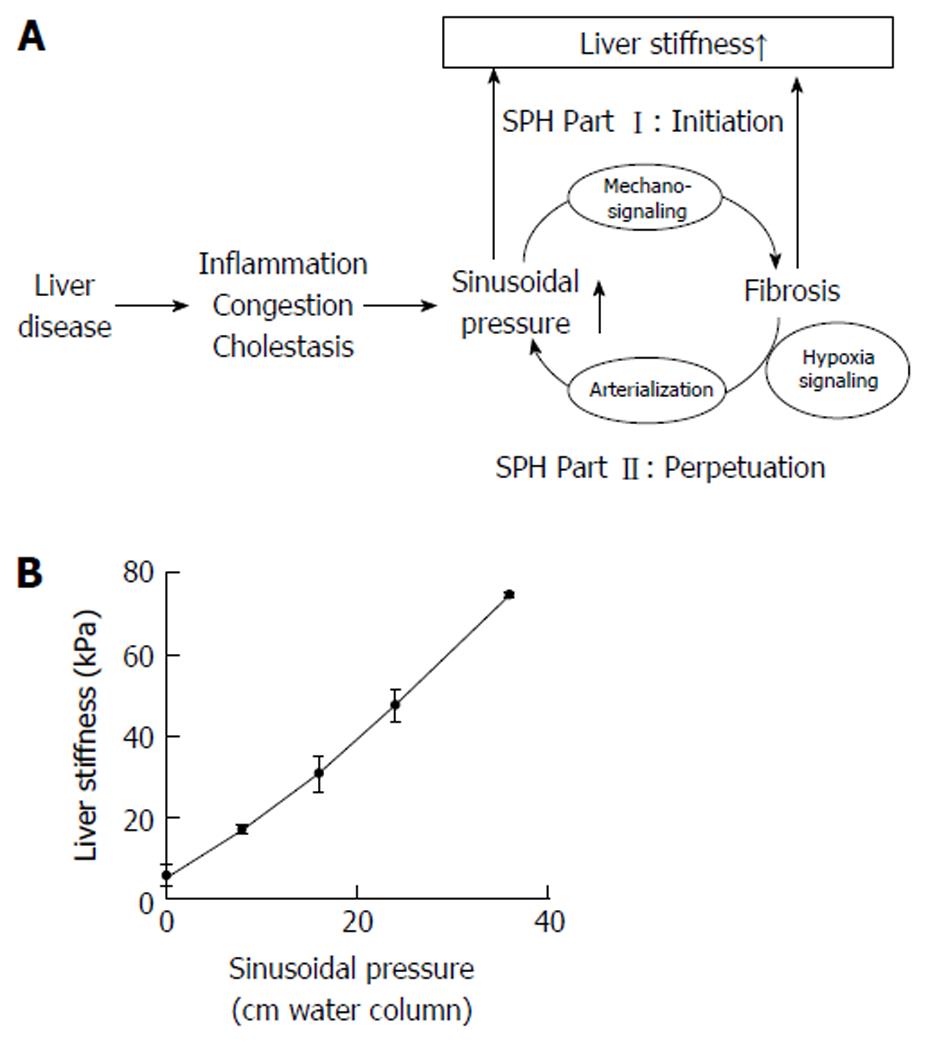Copyright
©The Author(s) 2016.
World J Gastroenterol. Dec 28, 2016; 22(48): 10482-10501
Published online Dec 28, 2016. doi: 10.3748/wjg.v22.i48.10482
Published online Dec 28, 2016. doi: 10.3748/wjg.v22.i48.10482
Figure 4 The sinusoidal pressure hypothesis and the role of liver stiffness.
A: Sinusoidal pressure hypothesis at the whole organ level. SP is the driving force of matrix deposition. Irrespective of the etiology, all liver pathologies (shown in the left) increase the SP that initiates matrix deposition via specific inter- and intracellular biomechanic signaling pathways (SPH Part I, Initiation). LS should be regarded as the combined read-out of elevated pressure and fibrosis. Both SP elevation and matrix deposition increase vascular resistance that ultimately lead to elevated hepatic arterial flow and finally complete arterial blood supply. The arterial response is mainly driven by hypoxia signaling and metabolic demand. Depending on dosage (> 12 mmHg) and time (> 4 wk), this vicious cycle will ultimately cause a complete arterialization leading to irreversible cirrhosis by exposing the low pressure organ to permanent high pressure (SPH Part II, Perpetuation); B: LS almost linearly depends on sinusoidal pressure in an isolated pig liver. In this experiment (modified from [25]), all vessels (caval and portal vein, hepatic artery and common bile duct) were ligated. The isolated organ was increasingly filled with isotonic sodium chloride solution and put under pressure. Under these conditions, according to the physical law of communicating pipes, the pressure within the caval or portal vein directly matches the SP. Similar to compliance studies in lungs, LS will show a slower increase at higher SP levels (not shown). LS: Liver stiffness; SP: Sinusoidal pressure; SPH: Sinusoidal pressure hypothesis.
- Citation: Mueller S. Does pressure cause liver cirrhosis? The sinusoidal pressure hypothesis. World J Gastroenterol 2016; 22(48): 10482-10501
- URL: https://www.wjgnet.com/1007-9327/full/v22/i48/10482.htm
- DOI: https://dx.doi.org/10.3748/wjg.v22.i48.10482









